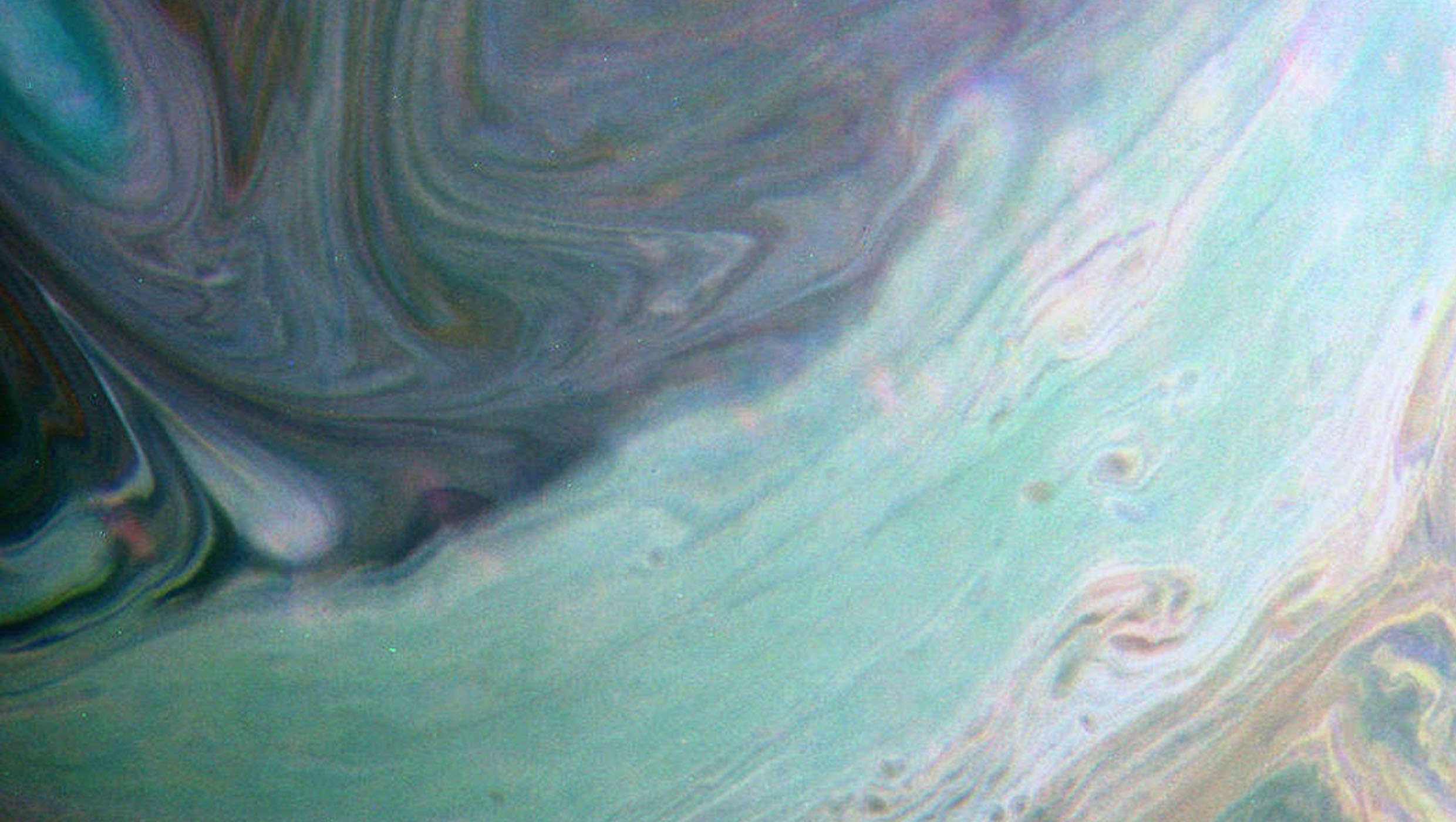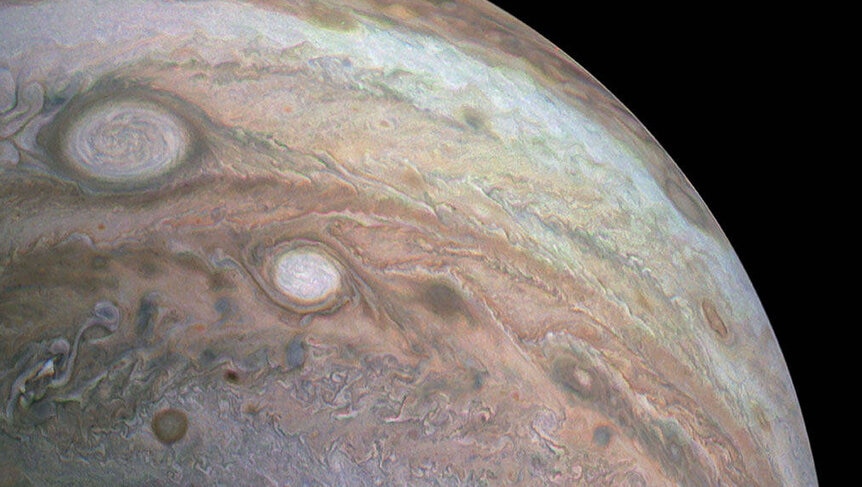Create a free profile to get unlimited access to exclusive videos, sweepstakes, and more!
Swirling storms on Saturn and Jupiter are unlike anything on Earth

The spirals and whorls on Jupiter and Saturn may look mesmerizing, but they are turbulent storms which are out of this world literally and otherwise. Nothing like this occurs on Earth.
Raging storms on these gas giants were thought to arise from the lower atmosphere, just like those on our planet—until now. New research suggests that these unearthly storms are probably powered by deeper internal forces rather than the external forces which fuel storms just above Earth’s surface. Simulations of Jupiter and Saturn have shown that their weather systems, from cyclones and anticyclones to jets and magnetic plumes, are mostly caused by violent internal processes.
Jupiter’s Great Red Spot, which is thought to have formed when the inner dynamo that generates the planet’s magnetic field set off immense anticyclones—systems in high-pressure areas in which air sinks and no clouds or rain form—is just one of these phenomena.
“These giant planets don't have any solid ground that can suppress strong jet streams and storms (for instance, hurricanes can last in the ocean but dont survive for long on land)," Rakesh Kumar Yadav, who led a study recently published in Science Advances, told SYFY WIRE. "These planets arealso rotating significantly faster than Earth, and their atmospheres (and deeper parts since they don't have a solid surface) are boiling more vigorously than our atmosphere. These factors are likely contributing to their different weather conditions."
There are more storms brewing on Jupiter and Saturn than just the Great Red Spot and Saturn’s hexagonal storm, which have gotten the most attention. One of the last things beamed back by Cassini before it vanished into the atmosphere of Saturn forever was gravitational data, and that, along with data from the Juno mission, helped Yadav’s team determine that jet streams on both planets must plunge thousands of miles deep. This brought about questions asking whether some of the storm vortices that can be seen on these planets spawn from convection that occurs far below the surface.
"We found that large storms in our simulation also slowly drift towards the westward direction, similar to Jupiter's great red spot," he said.
To find out how storms could possibly be born in the bowels of these planets, the research team modeled what they called a “thin shell” and “thick shell” simulations. Both of these approaches went further than just assuming where weather systems emerge. Each type of simulation factored in the fast convection that causes turbulence in planet-shaped spherical shells that were programmed to rotate just like the planets they were simulating.
"The thin shell approach suggests that just because of the fact that these planets are rapidly spinning and convecting, it is not very hard to produce significantly large storms," Yadav said. "Such storms form spontaneously by a process called turbulent self-organization. However, if we need to make even larger storms, then magnetic fields might play a role."
On these gas giants, convection is brought on as it is on Earth by warmer, less dense gas rising and colder, denser gas sinking. Though only gas is involved here, it can technically happen with any fluid, or substance that can flow and change shape when a force acts upon it to change.
The thin shell case investigated what goes on in convection layers in Jupiter and Saturn’s upper atmospheres. Turbulence happens between darker atmospheric bands, or belts, in which cooler gas is sinking, and lighter bands known as zones, where warmer gas is rising. The “thin shell” simulation generated cyclones, anticyclones like the ones thought to give rise to the Great Red Spot, and the zones and belts also known as zonal jets on gas giants like Jupiter and Saturn.
Now for the really heavy stuff. A planet’s dynamo generates its magnetic field from deep within. Earth’s dynamo is the constantly flowing liquid iron in the outer core (outside the inner core of solid iron), and electric currents are created as electrons flow with it, and that energy morphs into a magnetic field. This is why planets with magnetic fields are believed to have metallic cores. The “thick shell” simulation recreated the way the hydrodynamic layers of gas giants, which behave like fluids should, interact with their magnetic fields. This resulted in the convection deep inside the magnetic field causing it to vomit plumes into space. Wherever there was higher magnetic energy, it also created more anticyclones.
"Every once in a while, the inner dynamo layer essentially ejects large plumes of fluid in the outer layer," said Yadav. "These plumes can't keep on going out forever and are stopped by the surface layer where we see all the storm activity. Here, due to Coriolis force, (present due to Jupiter's spinning), these plumes must become anticyconic storms. This is what leads to the formation of pancake shaped giant storms."
There are some differences between the planets. Saturn has a hazier atmosphere, so the fluid dynamics behind its storms are more similar to each other than Jupiter’s. That could be because the thicker atmosphere makes it harder to determine whether gases are whirling around. Not as many anticyclones seem to happen on Saturn, either.
Next time you gaze at the hypnotic swirls of Saturn and Jupiter, remember that behind the beauty, there is a beast.



























